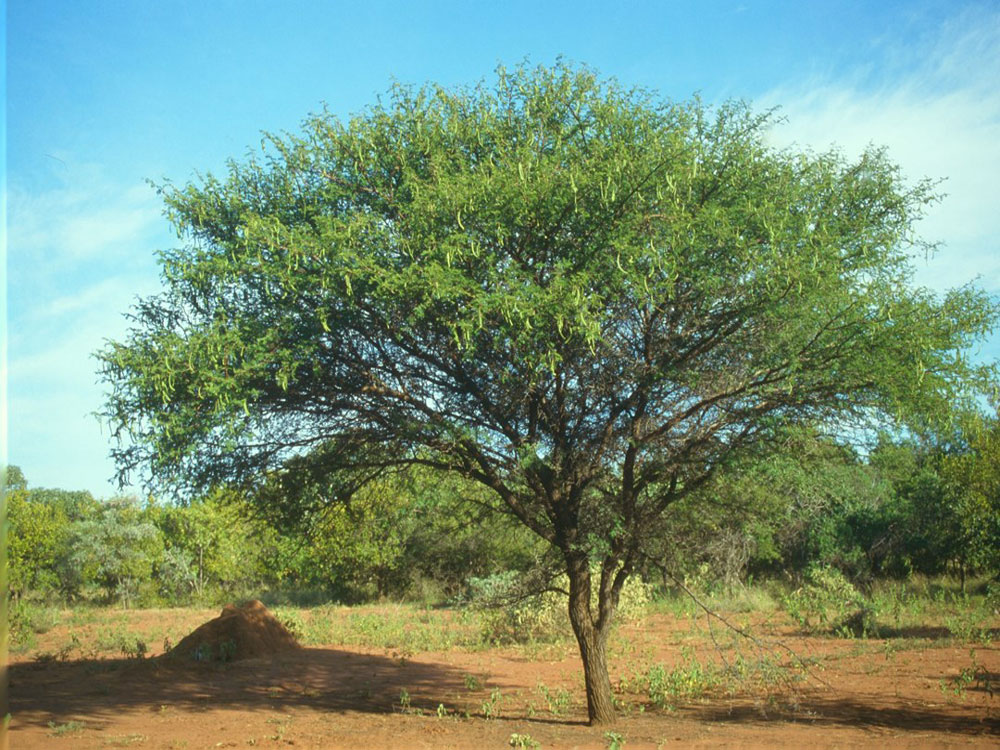Babul - Blackthorn Tree

Acacia nilotica
Summary
Scientific Classification
Kingdom: Plantae
Division: Magnoliophyta
Class: Dicotyledonae
Order: Fabales
Family: Fabaceae
Genus: Acacia
Species: A.nilotica
Scientific Name: Acacia nilotica (L.) Delile.
Common names
English: Arabic Gum tree; Babul Acacia; Blackthorn.
Hindi: Kikar, Babul.
Kannada: Babli.
Marathi: Babul.
Description:
- Habit and Habitat: A medium-sized almost evergreen tree, straight or crooked, armed tree with dark-blackish-brown, irregularly, longitudinally fissured bark. It is a pioneer species that is relatively fast growing on arid sites. It is an important riverine tree in India, Sudan and Senegal, where it is planted for timber.
- Distribution: Native from Egypt south to Mozambique and Natal; apparently introduced to Zanzibar, Pemba, and India; Arabia. It is considered as a serious weed in the South Africa.
- Morphology:
Leaf: Ramal and cauline, alternate, stipulate, stipules modified into ½ to 2” long straight, white thorns, petiolate, compound, bipinnate and paripinnate, pinnae 5-7 pairs, pinnules 10-20 pairs, sessile or subsessile, minute, ovate or oblong, entire, unicostate reticulate.
Inflorescence: Axillary cymose head.
Flower: Flowers tiny, clustered together in bright-yellow, round heads. Bracteate, ebracteolate, sessile or subsessile, complete, actinomorphic, hermaphrodite, hypogynous, pentamerous, yellow, very small. Calyx made up of 4 to 5 sepals, gamosepalous, campanulate, odd sepal anterior, valvate, and minute in size. Corolla made up of 4 or 5 petals, gamopetalous, tubular, about double the size of the calyx, valvate, yellow.
Flowering Season and Fruiting: July - December.
Androecium: Androecium consists of many stamens, polyandrous, filaments filiform, longer than corolla, dithecous, basifixed, introrse, and yellow.
Gynoecium: is monocarpellary, superior, unilocular, ovules many, marginal placentations, shortly stalked ovary, style long, stigma flat and minute.
Fruit: A lomentum, pods linear-oblong, glaucous-green, jointed, joints nearly orbicular, compressed, minutely hairy.
Seed: Many, large, non-endospermic, brownish-black, oblong, compressed, smooth, glabrous. - Propagation: Through seeds.
- Importance: The bark is a powerful astringent and used as a tan. It is used by the calico-printer, and also forms a valuable tanning material. It is used as railway sleepers and as a high quality fuel. Young twigs are used as “Datoon” for cleaning teeth. Medicinally tender leaves are given in diarrhea, or mixed with pomegranate juice in gonorrhea.
- Location: Sports Ground.
 Trees of GSS Project supported by Makerspace Belgaum Website concept and designe by
Trees of GSS Project supported by Makerspace Belgaum Website concept and designe by